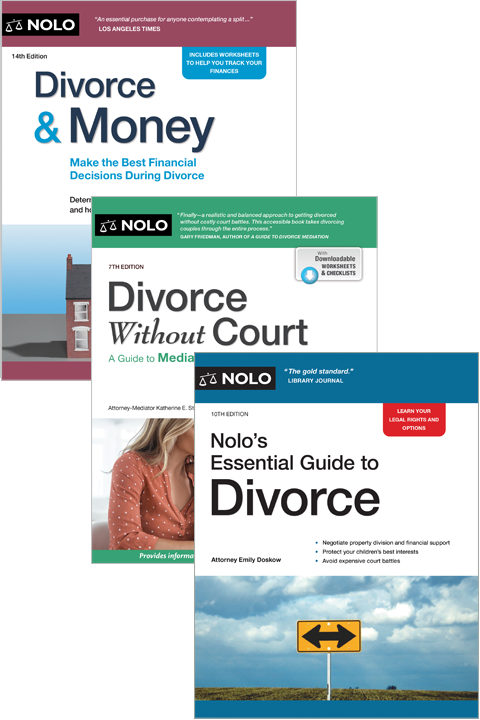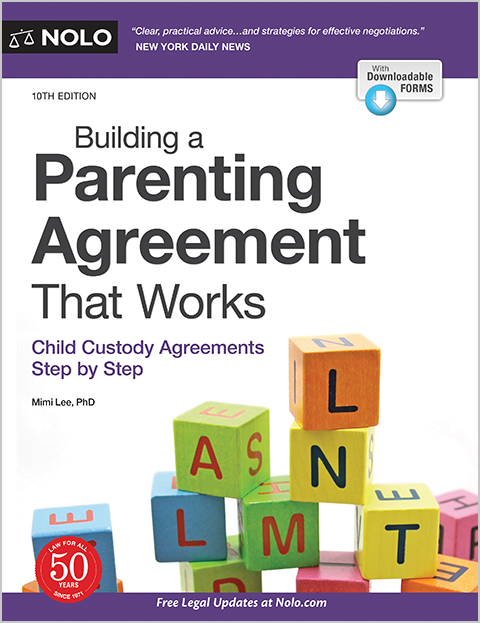Learn about the types of temporary orders you can get in family court.
Typical lawsuits take months, if not years, to make it to court. But if you're getting divorced and need a quick decision from a judge about who gets the kids, the car, the money in the bank accounts, or the house for now -- or if you need money for support right away -- obviously you can't wait that long. You need a temporary order.
When couples separate, important issues are often resolved (at least temporarily) in a short hearing before a judge. Even though these quick hearings are less formal than standard court hearings, their brevity means that you must be prepared and know exactly what you want. You may have only a few minutes to ask for it.
What Temporary Orders Are For
Let's say a couple is divorcing: the husband moves out, and the wife who's left behind needs money to feed and shelter the children. Realizing that her children would starve long before a full trial could be held, she is desperate for help. She can go to court to request a temporary order from a judge. Once the request is properly made, a hearing will be scheduled within days or weeks and a judge will issue his or her decision, either at the hearing or shortly thereafter.
Spouses can ask a court to temporarily:
- establish child custody and visiting arrangements
- provide for spousal support (alimony) and/or child support payments
- order either spouse not to sell valuable assets, and
- give possession of the family home or car to one of the spouses.
Temporary orders are usually valid until the court holds another hearing or the spouses arrive at their own settlement through negotiation or mediation.
When to Ask for a Temporary Order
When one divorcing spouse moves out of the house, you have two options: reach an agreement about how you'll share expenses and about child custody and support, or go to court and ask a judge to decide. If you and your spouse are able to agree, you can write up a temporary agreement and go on to try to resolve the rest of the issues in your divorce. If you and your spouse can't agree, one of you should go to court right away to quickly resolve any critical issues, such as spousal support. And, if the children will be staying with you, you should immediately file for custody and child support.
How to Ask for a Temporary Order
To get a court order, you must prepare and file some paperwork. Fill-in-the-blank forms may be available for free from the court or online. Some courts have self-help law centers for family law cases, with forms and instructions for people representing themselves, and sometimes even employees, such as staff attorneys, who can help you with your forms.
Here's what you'll probably need:
- A request for the court order you want. In some states, the forms you need are called an Application for Order to Show Cause (OSC) and an Order to Show Cause. An Order to Show Cause is a simple, fill-in-the-boxes legal form or short typed legal document that sets out what you are asking for -- such as a temporary child support order. It orders your spouse to come to court at a specific date and time and explain ("show cause") why the court should not grant your request.
- A supporting declaration. This is a written statement, signed under penalty of perjury, setting out facts that legally justify the issuance of the temporary order -- for example, the need for money to support your children. You can also submit declarations of other people who have first-hand knowledge of the facts.
- A proposed temporary order granting you the relief requested. This order will be signed by the family court judge if he or she grants your request.
- A proof of service. This is a document that proves to the court that the papers and forms related to your request have been properly delivered to your spouse. Check for instructions that come with the proof of service form; if there aren't any, you can check your own state's law about serving papers. To do this, see Nolo's State Laws page.
In some courts, you won't be allowed to file papers asking for a short hearing unless you've already filed for divorce. You can do both at the same time; it just means filling out more forms so that you can get your divorce started at the same time that you ask for temporary orders.
What to Expect at the Hearing
Your next step is to attend a court hearing where the judge will consider your request. In emergencies, the hearing can be held within a few days, but more often, it will be a few weeks.
The hearing may be held in a courtroom or just in the judge's office or "chambers." The judge may listen to a few minutes of testimony from you, your spouse and possibly other witnesses. Or the judge may only accept written evidence.
To support a request for temporary child support, you will probably need to produce copies of an income and expense budget -- or you may have had to fill out income and expense forms before you even filed the request -- and the judge will review them.
The judge will:
- review the details of the requests and the underlying facts
- possibly ask you some questions
- ask your spouse, if present, for his or her side of the story, and
- in child support cases, refer to state guidelines on recommended support, looking at factors such as each spouse's income and who has primary custody of the kids.
Often, this kind of hearing takes less than 20 minutes. At its conclusion, the judge will likely make an immediate ruling, usually either issuing the temporary order you requested or modifying it somewhat. The order will stay in effect only until the divorce is finally settled, either through a trial or when you and your spouse reach an agreement.
However, if the judge finds more information is needed, or finds that your spouse wasn't given the proper notice before the hearing, the judge may issue an order that is effective only until another hearing can be held.
For More Information
To learn more about temporary orders, get Nolo's Essential Guide to Divorce, by Emily Doskow (Nolo).

